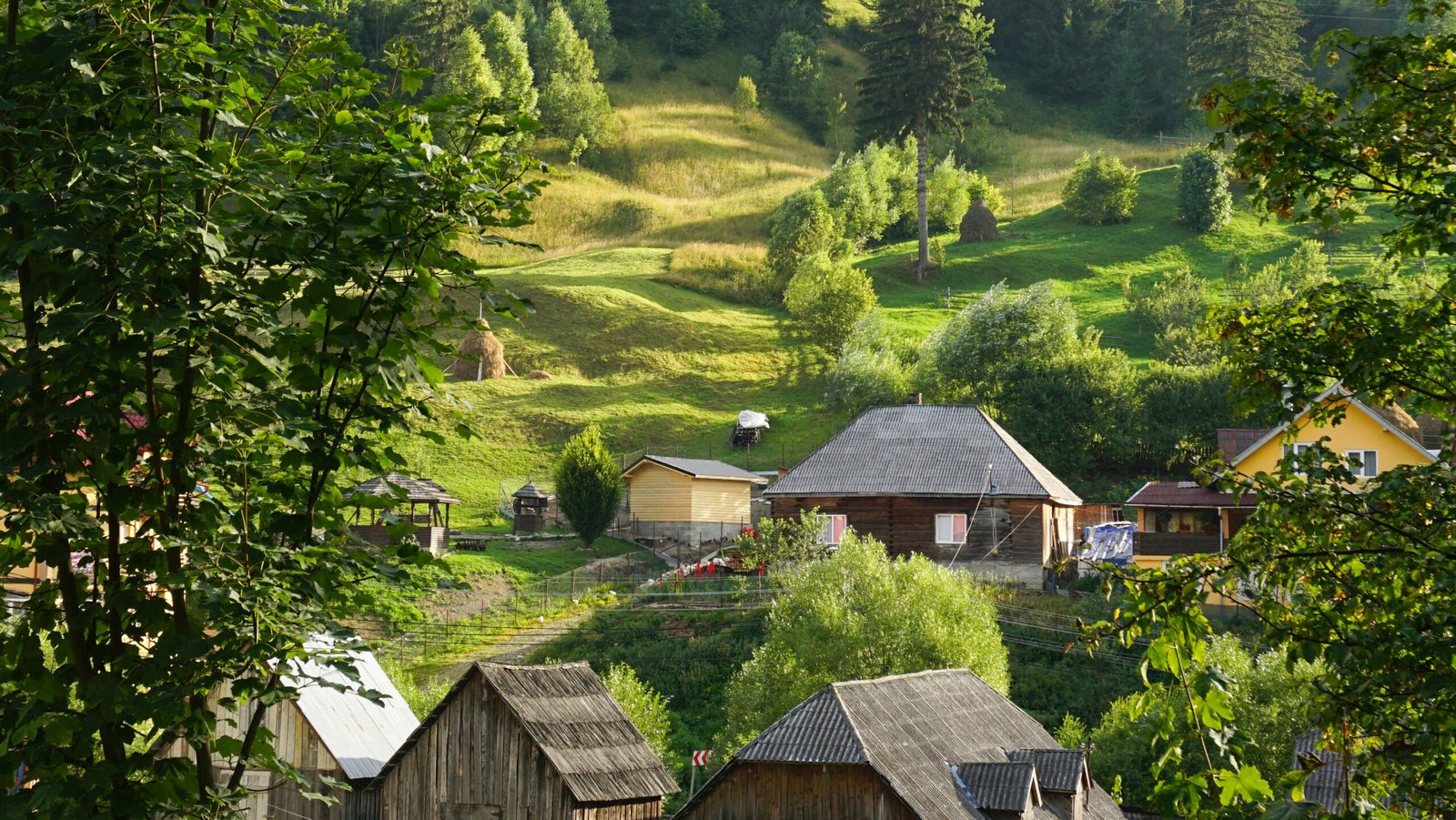
Where Is Transylvania?
Despite its mythical reputation, Transylvania is a real and vibrant region in central Romania and one of my personal favorites.
It’s bordered by the Carpathian Mountains and surrounded by the historic regions of Moldavia, Wallachia, and Banat.
Historically and culturally distinct from other regions in Romania, it stretches across counties like Brașov, Sibiu, Cluj, Alba, and Mureș.
The question “where is Transylvania?” often reflects how this region still sits on the edge of imagination and geography. Yet it’s well-mapped, connected by rail, road, and air to major Romanian cities and the rest of Europe.
What Makes the Transylvania Region Unique?
Transylvania’s identity blends Gothic mystery with deep-rooted traditions.
Its charm lies not just in Dracula legends, but in Saxon churches, thick forests, fortified towns, and mountain villages untouched by time.
The landscape plays a big role. The Transylvanian Alps (known locally as the Southern Carpathians) carve through the southern edge of the region.
These ranges—like Făgăraș and Piatra Craiului—offer some of Romania’s wildest scenery and best hiking routes.
The People of Transylvania
The people of Transylvania come from a cultural mix that’s shaped the region’s tone and pace.
Romanians, Hungarians, Germans, Roma, and other communities live here, each contributing to the language, food, and architecture.
Many towns have Hungarian names still in use today. Churches might be Orthodox, Catholic, Lutheran, or Unitarian.
In rural areas, it’s not uncommon to hear three languages in a single village square.
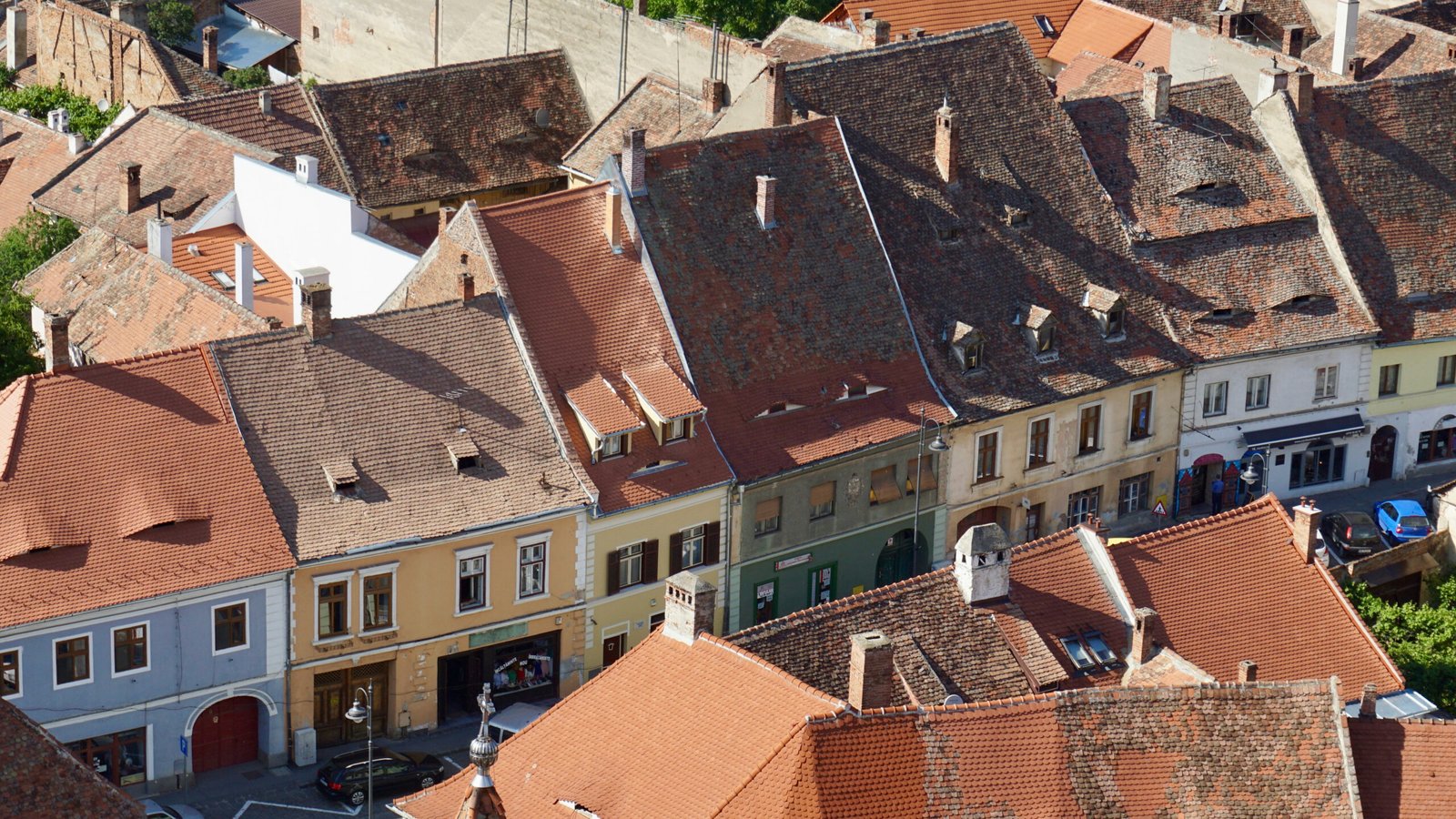
Major Cities in Transylvania
The cities in Transylvania are some of Romania’s best places to base yourself.
Each offers something different, from history and nightlife, to architecture and mountain access.
Cluj-Napoca
Cluj is the unofficial capital of the region.
It’s a university city with a modern pulse, but its core is still full of baroque palaces and narrow cobblestone streets.
You’ll find a mix of art galleries, student cafés, and historic squares.
Sibiu
Sibiu feels both lived-in and storybook and out of all the cities in this region, is my favorite to keep returning to again and again.
Its pastel facades and rooftop “eyes” give the town an instantly recognizable look. It’s also the gateway to the Transfăgărășan Highway and the southern Carpathians.
Brașov
Brașov sits at the edge of the mountains, wrapped in forest and medieval walls and is my second favorite city in Transylvania to visit.
You can walk from the town square to a hiking trail in minutes.
Bran Castle, often linked to Dracula, is nearby, though the city’s real appeal lies in its relaxed energy and layered history.
Alba Iulia
Alba Iulia holds symbolic importance for Romanian history.
It was here that the Great Union of 1918 was declared. The star-shaped citadel is one of the best-preserved in Europe and feels surprisingly unvisited.
Târgu Mureș
Targu Mures (Târgu Mureș) sits where Romanian and Hungarian cultures visibly overlap.
Its architectural mix includes art nouveau, Transylvanian baroque, and wide Austro-Hungarian boulevards.
It’s a great stop if you want fewer tourists and more local pace.
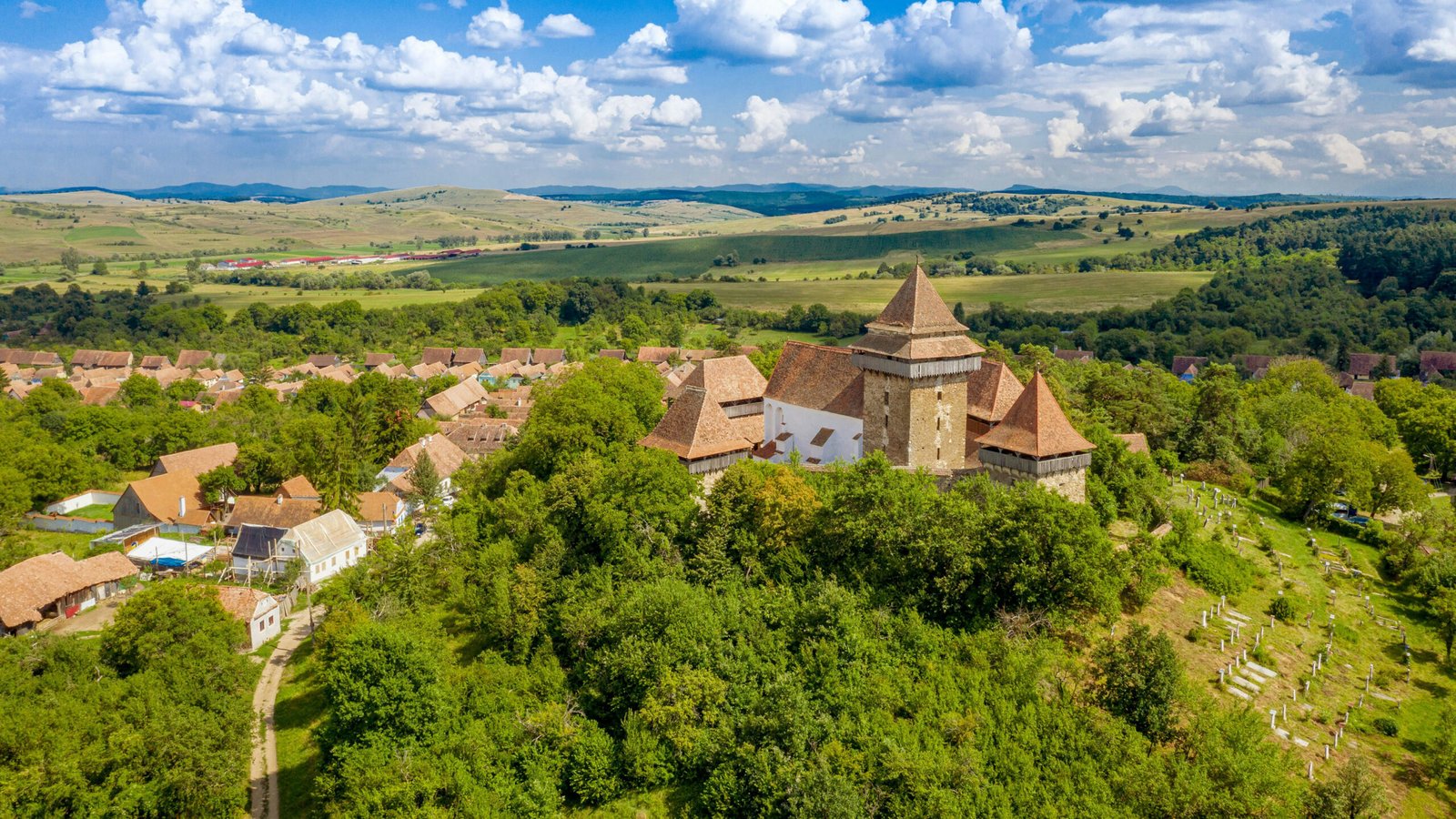
Smaller Towns and Villages Worth Visiting
Outside the major cities, the Transylvania region hides dozens of smaller destinations where life moves differently.
Sighișoara
Sighișoara is a medieval citadel that’s still fully lived in and is an excellent choice for anyone visiting Transylvania for the first time, and wanting to experience a fully functional Medieval old town.
Brightly painted houses, steep staircases, and the Clock Tower create a fairytale backdrop. It’s one of the best-preserved fortified towns in Europe.
Biertan
A UNESCO-listed village with a massive fortified church at its center, Biertan is surrounded by hills and vineyards.
The view walking into town is one of Transylvania’s most memorable.
Viscri
Known for its whitewashed houses and royal ties, Viscri feels almost frozen in time. In my dreams, I hope that I can retire to a small Transylvanian village like Viscri, and just enjoy the food of this region and relax in my little garden.
King Charles of the United Kingdom owns a house here and supports rural preservation projects. Don’t expect much to do, but that’s the point.
That said, you will find some hiking trails, a fortified church, beautiful houses and scenery, and some great restaurants to try.
Rășinari
Near Sibiu, Rășinari offers a glimpse of daily village life that’s still shaped by farming, church bells, and long afternoons.
You can hike into the forest or simply watch goats pass by on their way home.
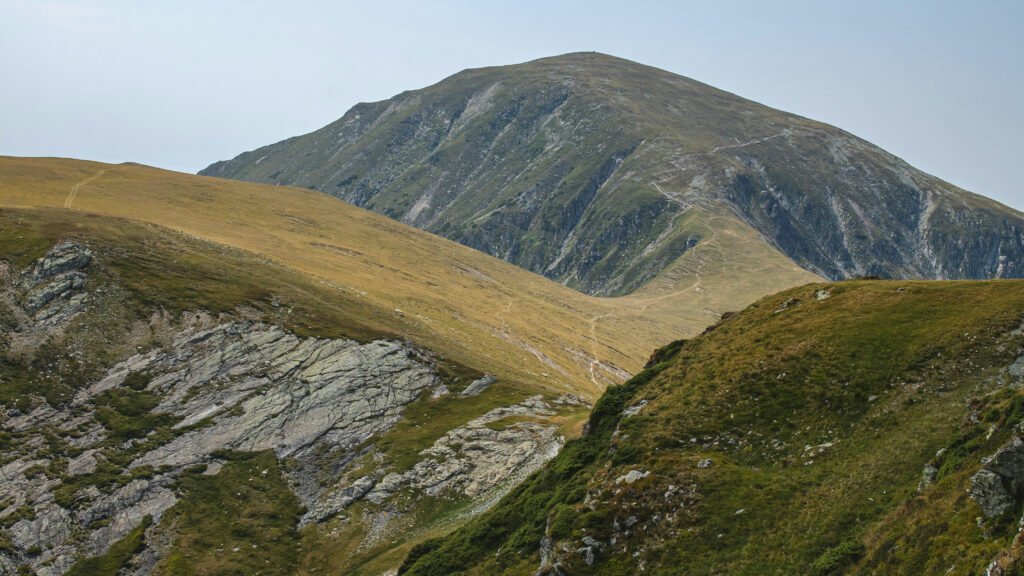
Nature and Landscapes
Much of the Transylvania region is defined by its natural features. Wide plateaus stretch between steep mountains.
Forests cover much of the land. Bears, wolves, and lynx still live in the wild here, especially in the Făgăraș Mountains.
Transylvanian Alps
The Transylvanian Alps are a dramatic part of the Carpathians, reaching heights over 2,500 meters (about 8,200 feet).
The Făgăraș range is the tallest, home to the famous Moldoveanu Peak.
If you’re driving, the Transfăgărășan Highway cuts across these mountains with hairpin turns, tunnels, and views that leave even locals speechless and is often considered one of the best drives in Europe.
It’s best from late June to October, depending on snowfall, as the highway is closed if there is snow.
Apuseni Mountains
To the west, the Apuseni range is gentler but no less striking.
Limestone caves, waterfalls, and underground rivers draw hikers and cavers alike. Some villages here are nearly self-sufficient, with wooden homes clinging to green slopes.
How to Get Around Transylvania
The region’s size and geography mean that moving around takes a bit of planning, but the Transylvania route you take can be part of the adventure, and is well worth it.
By Car
Driving offers the most flexibility, especially for visiting rural villages and natural sites.
Roads vary in quality but the main highways are solid. Be aware that mountain routes can be narrow and rough, but still, car travel lets you explore the less-touched corners of the region.
By Train
Romania’s train network covers most major cities in Transylvania.
It’s affordable and scenic, though not always fast, so bring a book, or plan to use this time to just relax.
Routes like Sibiu to Brașov or Cluj to Sighișoara offer views of forests and hills along the way.
By Bus or Minibus
Buses connect towns and villages not served by train.
Timetables can be irregular and sometimes only available in Romanian, but they’re essential for regional travel. Locals often use minibuses, sometimes called maxi-taxis, which depart only when full.
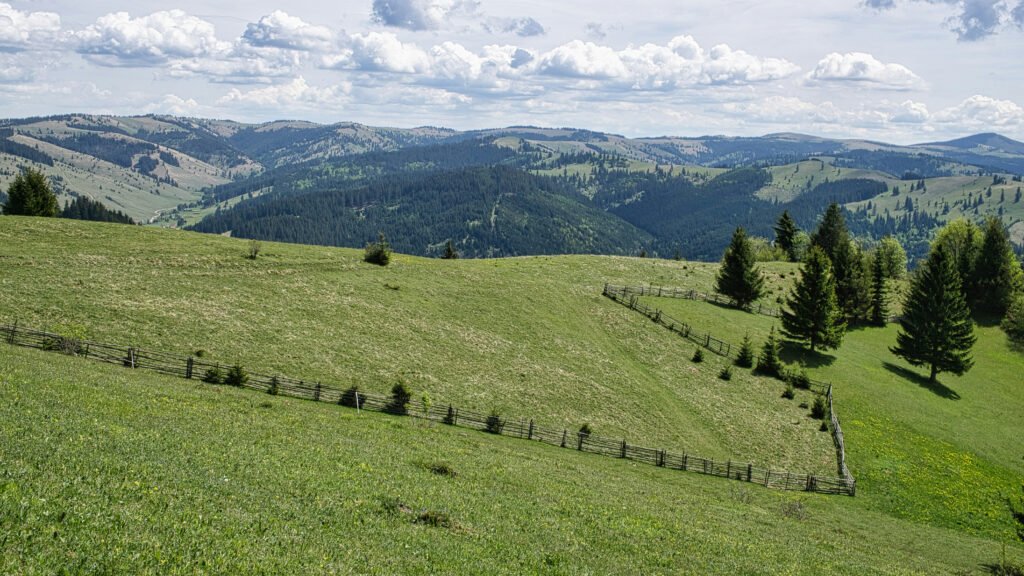
When to Visit the Transylvania Region
Each season brings something different to the Transylvania region.
Spring is green and quiet, with flower-filled meadows and cool air.
Summer draws more visitors, but even in July you can find peaceful mountain trails and shaded town squares.
Autumn brings harvest festivals, bright foliage, and smoky smells from wood stoves. Villages slow down, and markets fill with grapes, plums, and squash.
Winter is cold, especially in the mountains, but the holidays bring a sense of tradition and warmth that’s hard to fake.
Tips for Exploring Transylvania
Try to mix cities with small towns. Spend time in places without an itinerary. Taste local cheese, visit a fortified church, or simply walk at dusk as village lights come on.
Avoid rushing between sights.
The charm of Transylvania lies in the spaces between, sheep in the road, old women sweeping porches, old men sitting outside their fences on a small purpose built bench, and forests you didn’t expect.
If you hear about a festival or local fair, go.
These events, called târguri or nedei in some areas, are where Transylvanian people gather to eat, trade, dance, and reconnect.
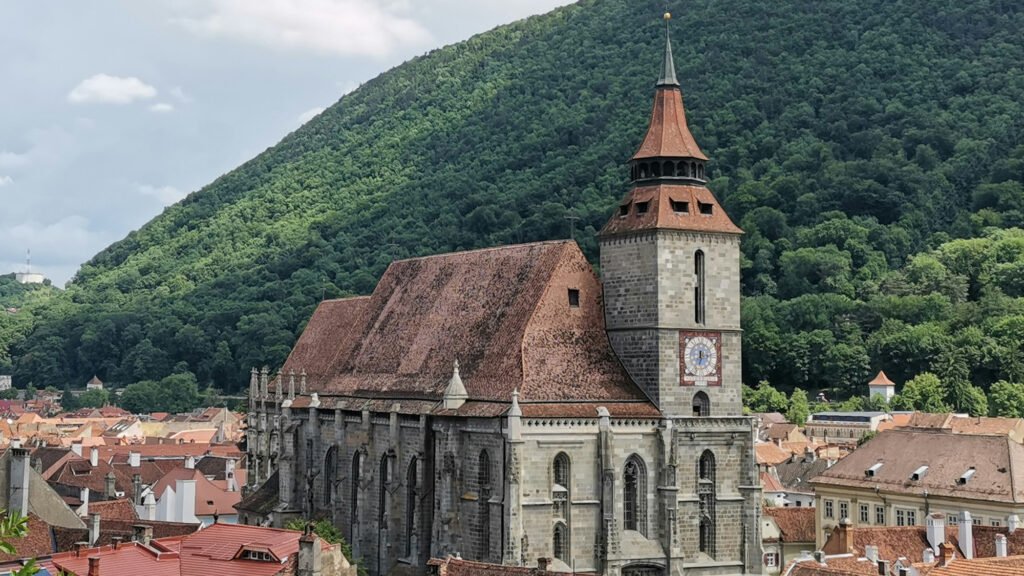
Final Thoughts
There’s no single Transylvania region experience. That’s the point.
Whether you spend your days wandering Sibiu’s alleys, hiking the Transylvanian Alps, or sipping plum brandy beside a wooden gate, you’re stepping into a landscape where history still lingers.
Give it time. Let the rhythm shift. That’s how Transylvania reveals itself, not all at once, but moment by moment.







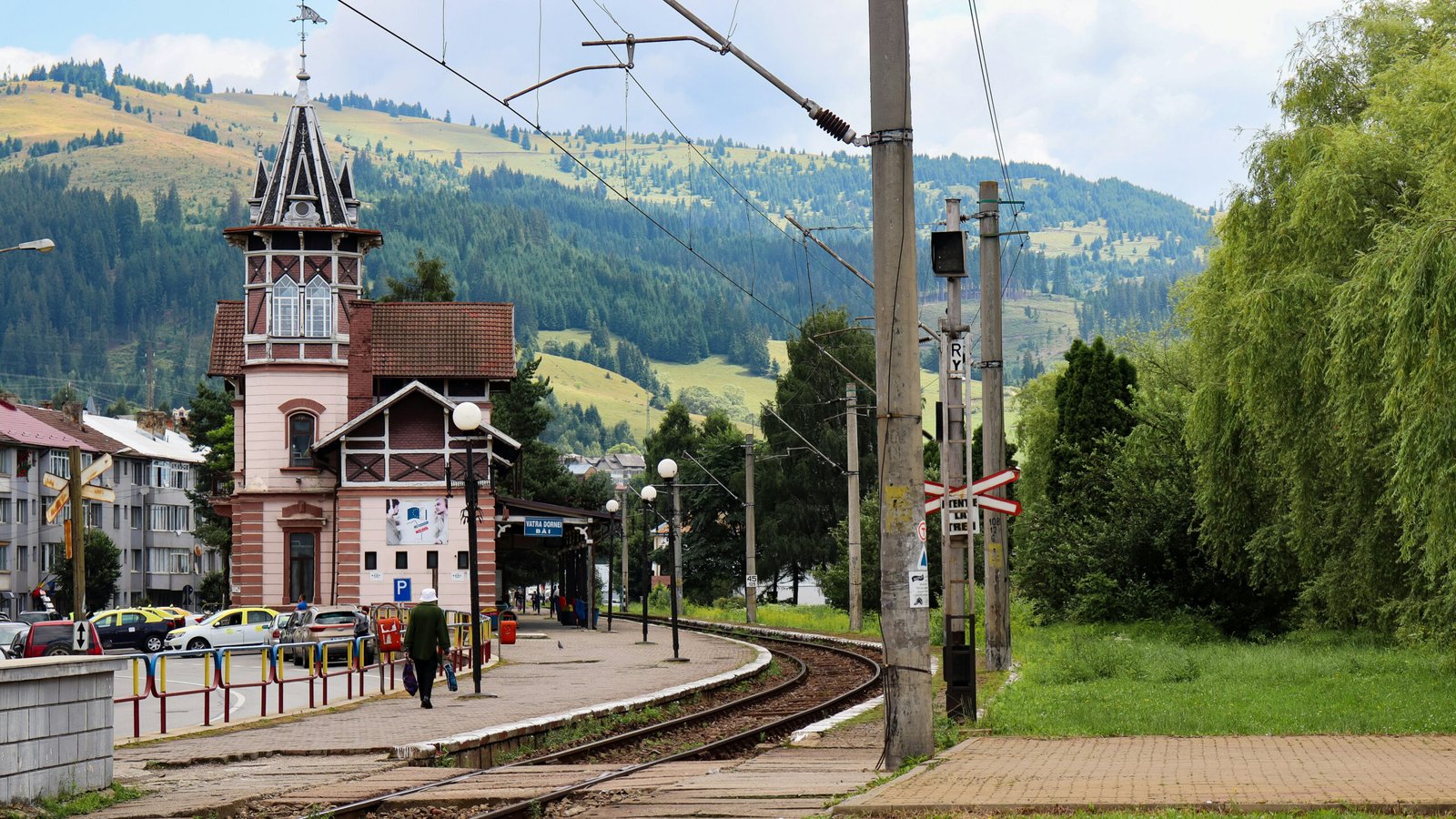
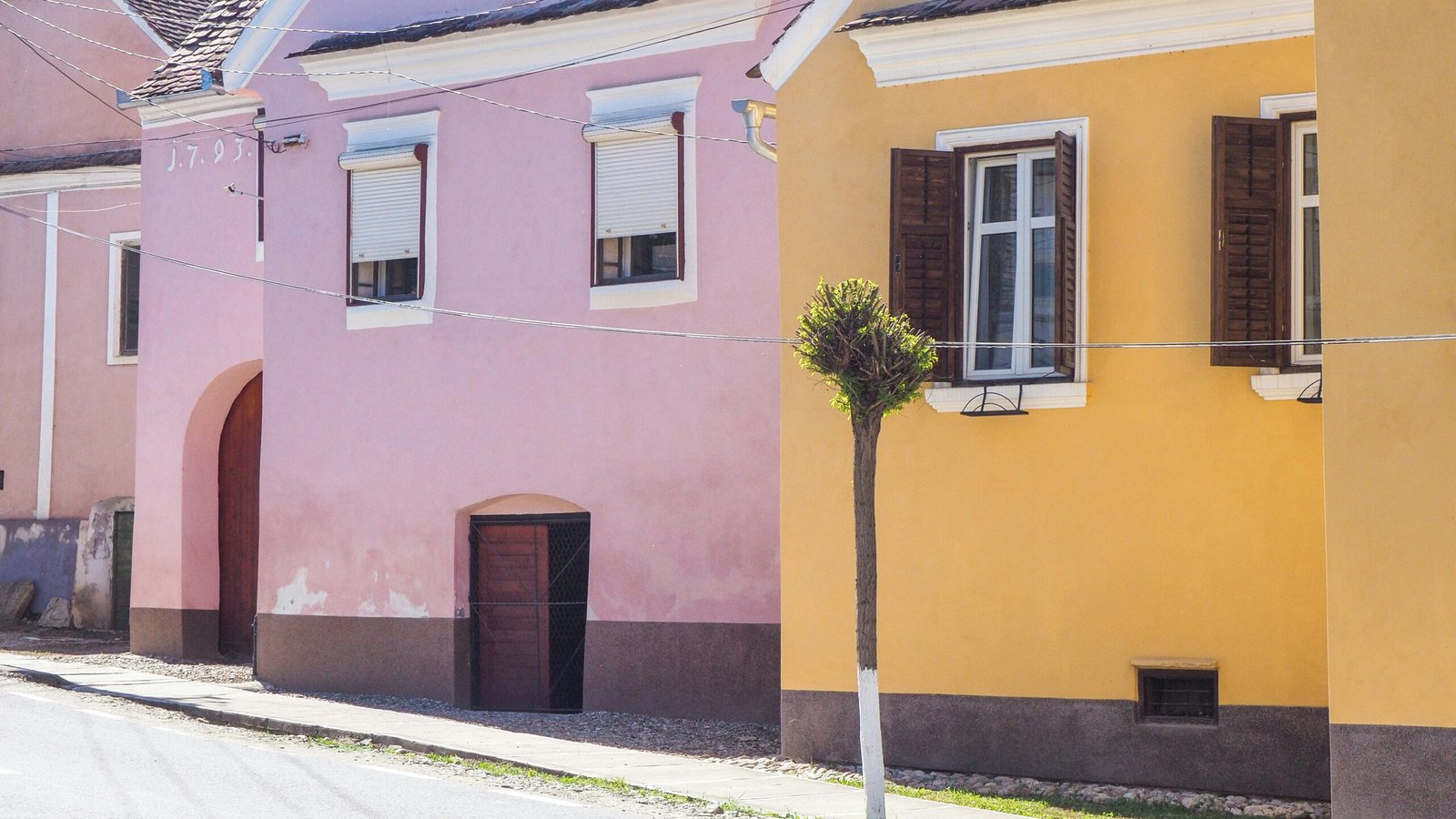
Leave a Reply